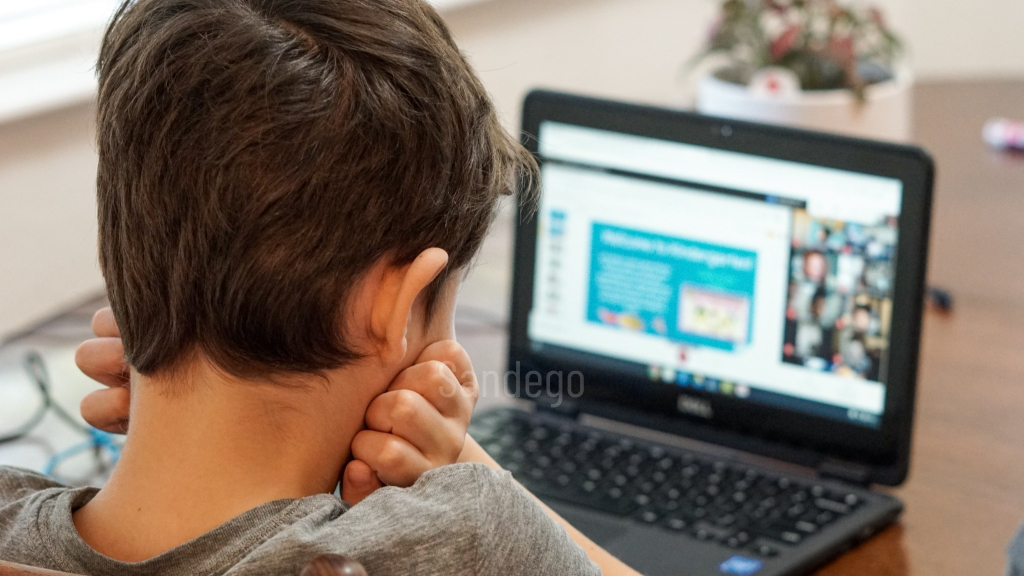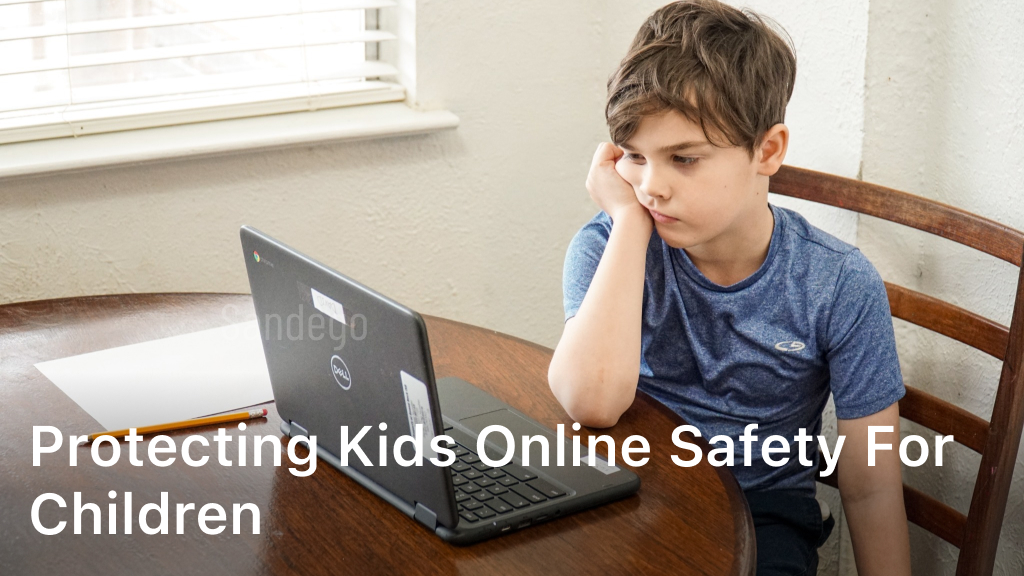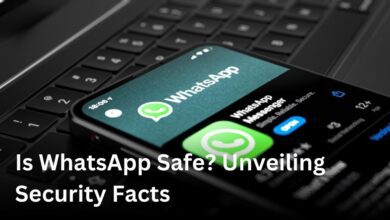Online safety for children – In this section, we will provide crucial insights and tips to help you safeguard your child’s online presence. We will explore potential online risks, establish internet guidelines, educate children about online privacy, and promote digital literacy to protect our children’s online safety.
Join us as we dive into the world of children’s online safety and learn how to create a safer and more secure online experience for our children.
Understanding Online Risks
In today’s digital age, children face a multitude of online risks that can compromise their safety and wellbeing. From cyberbullying to exposure to inappropriate content, it is important to be aware of the dangers of the internet and take necessary measures to protect our children. Let’s explore some of the most common online risks for children:
| Risk | Description |
|---|---|
| Cyberbullying | Harassment or bullying through digital means, such as social media, messaging apps, or online gaming. |
| Online predators | Individuals who target children for sexual exploitation, grooming, or blackmail. |
| Inappropriate content | Material that is unsuitable for children, such as violent or sexual content, hate speech, or graphic imagery. |
| Phishing scams | Fraudulent attempts to obtain sensitive information from children, such as passwords, credit card details, or personal data. |
| Identity theft | The act of stealing a child’s personal information with malicious intent, such as opening a bank account or applying for a credit card in their name. |
As parents, it is our responsibility to understand these risks and take proactive steps to protect our children from them. In the following sections, we will discuss some practical tips for establishing internet guidelines, educating children about online privacy, fostering open communication, and monitoring online activities to ensure our children’s online safety.
Establishing Internet Guidelines
As responsible adults, we understand that setting rules for online safety is crucial for children. Not only does it help us monitor their online behavior, but it also allows us to establish age-appropriate boundaries to keep them safe.
Create Clear and Concise Guidelines
When establishing internet guidelines for kids, it’s essential to create clear and concise rules that are easy to understand and follow. Keep in mind that different age groups may require different guidelines, and it’s crucial to tailor them accordingly.
| Age Group | Guidelines |
|---|---|
| Under 5 years old | Children in this age range should be net-free. No screen time is recommended. |
| 5 to 9 years old | Screen time should be limited to no more than 1 hour per day. Children in this age range should also have adult supervision while online. |
| 10 to 13 years old | Screen time should be limited to no more than 2 hours per day. Children in this age range should also have guidelines around social media use and online communication with strangers. |
| 14 years old and above | Screen time should still be limited, but children in this age range can have more independence online. They should also be taught about online reputation and the impact it can have on their future. |
Teach Responsible Online Behavior
It’s essential to teach children responsible online behavior as part of establishing internet guidelines for kids. This includes reinforcing the importance of online privacy, avoiding sharing personal information, and being respectful to others online.
Monitor Screen Time
Monitoring screen time is also a crucial part of setting rules for online safety. Parents can use apps and tools to monitor screen time and set limits on device usage. It’s important to strike a balance between screen time and non-screen activities, such as physical activity and social interaction.
Final Thoughts
Establishing internet guidelines for kids is an essential part of ensuring their online safety. By creating clear and concise rules, teaching responsible online behavior, and monitoring screen time, we can help children navigate the digital world safely and responsibly.
Establishing Internet Guidelines

In today’s digital age, it is crucial to establish internet guidelines for children to ensure their online safety. Teaching kids about online privacy and children’s privacy settings is a fundamental aspect of creating these guidelines.
Teaching Kids About Online Privacy
When it comes to teaching kids about online privacy, it is essential to explain the potential risks of sharing personal information online. We must teach our children that any information shared on the internet has the potential to be accessed by strangers and used in ways they may not expect.
To ensure their privacy, children need to know how to adjust their privacy settings on different platforms they use. For example, on social media platforms, they should know how to modify their profile settings, control who can see their posts, and block or report users when necessary.
Read More : Connect to VPN Without Internet Access
Children’s Privacy Settings
There are various privacy settings available on different platforms, and it’s important to go over them with your child. For instance, on smartphones and tablets, parents can enable restrictions to control the content and apps that children can access. Additionally, you can use filters and software that block inappropriate content or websites.
| PLATFORM | PRIVACY SETTINGS |
|---|---|
| Social Media | Adjust profile settings Control who can see posts Block or report users |
| Smartphones/Tablets | Enable restrictions Use filters and software to block inappropriate content/websites |
| Websites | Check privacy policies Block cookies and pop-ups Use ad blockers |
It’s also crucial to check the privacy policies of websites that your child uses to ensure that they are safe and secure. By blocking cookies and pop-ups and using ad blockers, you can further protect your child’s online privacy.
Overall, teaching children about online privacy and children’s privacy settings is a crucial component of establishing internet guidelines. By doing so, we can ensure their online safety and help them become responsible digital citizens.
Encouraging Open Communication
In this section, we will discuss how fostering open communication with children is crucial in ensuring their online safety. We understand that it can be challenging to talk to kids about online safety, but honest conversations are essential to establish trust and prevent potential risks. Therefore, we suggest some tips to help create a safe and supportive environment for children to discuss their online experiences.
Listening without judgment
The first step in encouraging open communication is to listen to your child without judgment. Children may feel embarrassed or ashamed to share some aspects of their online experiences, so it is crucial to create a non-judgmental environment for them to express themselves. Encourage your child to share their online experiences by actively listening and validating their feelings.
Asking open-ended questions
Asking open-ended questions is an effective way to encourage your child to share more information about their online experiences. You can ask questions like:
| Questions to ask | Avoid asking |
|---|---|
| What was the most exciting thing you did online today? | Did you do anything wrong online? |
| What do you like doing the most on the internet? | Why are you always on your phone? |
| Who did you talk to online today? | Did you talk to strangers online? |
Asking open-ended questions helps you understand your child’s online experiences better and provides an opportunity for you to educate them on online safety.
Educating your child about online safety
Encourage your child to share their online experiences by actively listening and validating their feelings. You can use their online experiences as an opportunity to educate them about online safety. Help your child understand that not everyone they meet online is who they say they are and that they should never share personal information with strangers online. Also, explain the risks associated with sharing sensitive information online, like photos and videos.
Setting a good example
Children often learn by observing their parent’s behavior. Therefore, you should lead by example and demonstrate responsible online behavior. Establish healthy online habits like taking breaks from devices and avoiding using technology during mealtimes and bedtime. This will help create an environment where your child feels safe to share their online experiences with you.
In conclusion, encouraging open communication is a critical step in ensuring your child’s online safety. By listening without judgment, asking open-ended questions, educating them about online safety, and setting a good example, you can create a safe and supportive environment for your child to share their online experiences with you.
Monitoring Online Activities
One of the most critical aspects of ensuring children’s online safety is monitoring their online activities. As parents, we need to be vigilant and aware of our children’s actions online. With the rapid growth of the internet, it has become increasingly difficult to monitor all online activities. However, there are different methods we can employ to keep track of our children’s online activities.
Parental Control Software
Parental control software can be a helpful tool in monitoring our children’s online activities. This software allows us to filter content, track our children’s online activity, and even limit screen time. There are different types of parental control software available, ranging from free to paid options. It is essential to research and choose the best option that suits our family’s needs.
Regular Check-Ins
In addition to parental control software, regularly checking in with our children is also crucial. Asking them about their online activities and what websites they have visited can provide valuable information. It can also be an opportunity to reinforce online safety guidelines and discuss any concerns or issues they may have encountered.
Balance Privacy and Safety
While monitoring our children’s online activities, it is essential to balance their privacy and safety. It is crucial to respect our children’s privacy and not invade their personal space. It is also important not to monitor our children without their knowledge. Instead, we should have an open and honest conversation with our children about our intentions for monitoring their online activities and establish clear guidelines together.
Promoting Digital Literacy
In today’s digital age, teaching kids digital literacy is crucial to ensure their online safety. By providing them with the necessary internet skills, we can empower them to make informed decisions and stay safe online.
Identifying Fake News
With the rise of social media, it has become easier than ever to spread misinformation. Teaching kids how to identify fake news by analyzing sources, checking for bias, and fact-checking information is essential. Encourage them to question the legitimacy of information before sharing it with others.
Evaluating Online Sources
With so much information available online, it can be challenging to determine which sources are credible. Teach children to evaluate online sources by looking at the author’s credentials, the date of publication, and the website’s reputation.
Practicing Responsible Online Behavior
Teaching children how to practice responsible online behavior is crucial in ensuring their safety. This includes understanding the potential consequences of their actions online, treating others with respect, and avoiding inappropriate content.
Conclusion
In today’s interconnected world, prioritizing online safety for children is paramount in safeguarding their digital presence. We must remain vigilant in understanding potential risks, establishing guidelines, educating children, fostering open communication, monitoring online activities, and promoting digital literacy. By doing so, we can better protect our children’s online experiences and ensure they can navigate the internet safely.
As parents, educators, and caregivers, we all play a vital role in ensuring the safety and well-being of our children. By working together and implementing the strategies discussed in this article, we can create a safer online environment for children, one that empowers them to use the internet responsibly while exploring the boundless possibilities it offers.
FAQ
Why is online safety for children important?
Online safety for children is crucial in today’s digital age because it helps protect them from potential risks and dangers they may encounter while using the internet. By prioritizing their online safety, we can ensure their well-being and minimize the chances of cyberbullying, exposure to inappropriate content, and interactions with online predators.
What are some common online risks that children face?
Children face several online risks, including cyberbullying, online predators, and exposure to inappropriate content. Cyberbullying involves the use of technology to harass, threaten, or humiliate others, while online predators may attempt to manipulate or exploit children. Exposure to inappropriate content can have a negative impact on a child’s well-being and development.
How can I establish internet guidelines for my child?
Establishing internet guidelines for children is essential to ensure their online safety. Start by setting age-appropriate boundaries and rules, such as limiting screen time and prohibiting the sharing of personal information. It is important to have open discussions with your child about responsible online behavior and the potential risks they may encounter.






